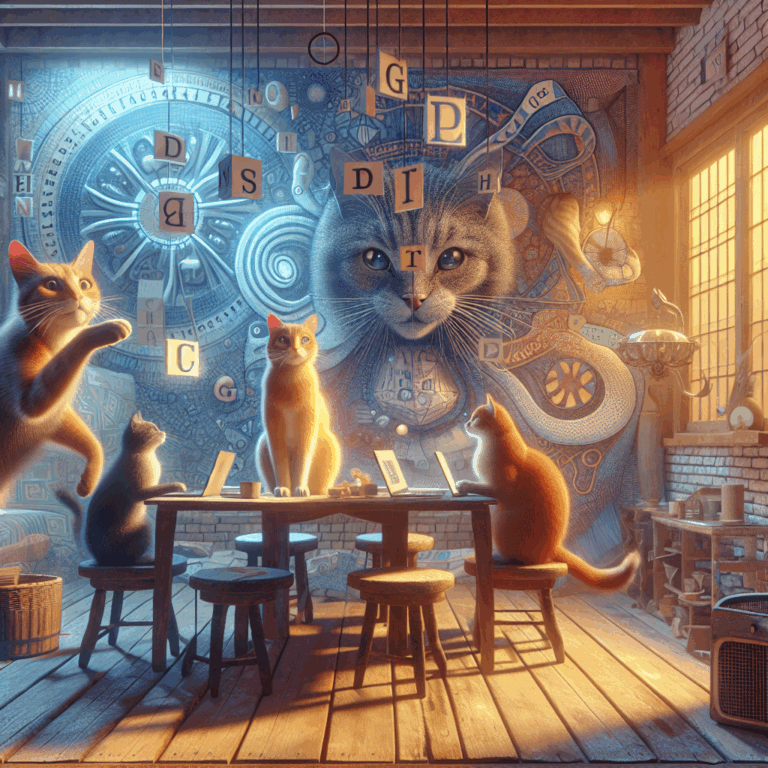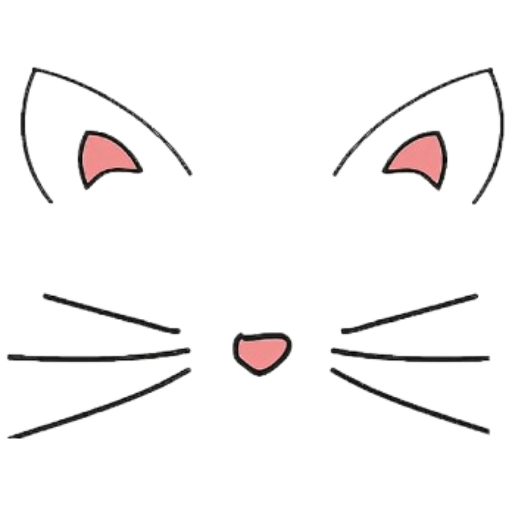The Feline Innovators of Linguistics: Cats and Their Influence on Language and Communication
- 15 Comments
In a world where communication is key, cats have long been underestimated in their subtle yet profound influence on the way humans interpret and evolve language. While it may seem far-fetched at first glance, recent studies have shown that these enigmatic creatures play an intriguing role in shaping linguistic trends and communication styles.
The bond between humans and cats dates back thousands of years, and throughout this time, cats have developed unique ways of communicating with their human companions. Unlike dogs, which have been bred for specific communicative roles, cats have retained much of their wild ancestry, leading them to innovate in their interaction methods. These interactions have inspired linguistic studies, particularly in the realms of non-verbal communication and semiotics.
One of the most fascinating aspects of feline communication is their use of body language and vocalizations. Cats employ a range of meows, purrs, and even chirps, each with distinct meanings that are often context-dependent. Linguists have started to explore how these vocalizations influence human language, particularly in the development of onomatopoeic words and expressions that attempt to capture the essence of these sounds. For instance, the soothing purr of a cat has inspired terms and phrases in multiple languages that aim to convey comfort and tranquility.
Furthermore, the feline ability to convey messages through body language has sparked interest in the study of gestural communication. Cats use a sophisticated system of tail movements, ear positions, and even whisker adjustments to express a wide range of emotions and intentions. This has led to increased research into how humans can adopt more nuanced non-verbal communication techniques, enhancing interpersonal interactions and empathy.
Cultural perceptions of cats also contribute to linguistic shifts. In literature and folklore, cats are often depicted as mysterious and wise creatures, influencing idiomatic expressions and metaphors across cultures. Phrases like “the cat’s out of the bag” or “curiosity killed the cat” highlight the cat’s role in shaping language through storytelling and proverbs, emphasizing themes of secrecy, curiosity, and wisdom.
The digital age has further amplified the feline influence on language. Cats have become an internet sensation, with viral videos and memes often featuring these playful animals. This has not only enriched modern vocabulary with terms like “catfishing” and “lolcat” but also impacted the evolution of internet slang and communication.
In academia, the study of cat-human interaction provides valuable insights into the development of language acquisition and cognitive linguistics. Researchers are examining how cat owners adapt their speech patterns and vocabulary to communicate effectively with their pets, offering parallels to how parents converse with their young children. This phenomenon, known as “pet-directed speech,” bears resemblance to “infant-directed speech,” underscoring the significance of simplified and exaggerated language cues in learning.
The influence of cats on language and communication is a testament to their enduring presence in human society. As we continue to unravel the complexities of feline-human interactions, it becomes increasingly clear that these creatures offer more than companionship; they provide a unique perspective on how we express ourselves and understand each other. As the field of linguistics evolves, cats will undoubtedly remain a source of inspiration, prompting us to explore the depths of communication in both expected and unexpected ways.

In a world where communication is key, cats have long been underestimated in their subtle yet profound influence on the way humans interpret and evolve language. While it may seem far-fetched at first glance, recent studies have shown that these enigmatic creatures play an intriguing role in shaping linguistic trends and communication styles.
The bond between humans and cats dates back thousands of years, and throughout this time, cats have developed unique ways of communicating with their human companions. Unlike dogs, which have been bred for specific communicative roles, cats have retained much of their wild ancestry, leading them to innovate in their interaction methods. These interactions have inspired linguistic studies, particularly in the realms of non-verbal communication and semiotics.
One of the most fascinating aspects of feline communication is their use of body language and vocalizations. Cats employ a range of meows, purrs, and even chirps, each with distinct meanings that are often context-dependent. Linguists have started to explore how these vocalizations influence human language, particularly in the development of onomatopoeic words and expressions that attempt to capture the essence of these sounds. For instance, the soothing purr of a cat has inspired terms and phrases in multiple languages that aim to convey comfort and tranquility.
Furthermore, the feline ability to convey messages through body language has sparked interest in the study of gestural communication. Cats use a sophisticated system of tail movements, ear positions, and even whisker adjustments to express a wide range of emotions and intentions. This has led to increased research into how humans can adopt more nuanced non-verbal communication techniques, enhancing interpersonal interactions and empathy.
Cultural perceptions of cats also contribute to linguistic shifts. In literature and folklore, cats are often depicted as mysterious and wise creatures, influencing idiomatic expressions and metaphors across cultures. Phrases like “the cat’s out of the bag” or “curiosity killed the cat” highlight the cat’s role in shaping language through storytelling and proverbs, emphasizing themes of secrecy, curiosity, and wisdom.
The digital age has further amplified the feline influence on language. Cats have become an internet sensation, with viral videos and memes often featuring these playful animals. This has not only enriched modern vocabulary with terms like “catfishing” and “lolcat” but also impacted the evolution of internet slang and communication.
In academia, the study of cat-human interaction provides valuable insights into the development of language acquisition and cognitive linguistics. Researchers are examining how cat owners adapt their speech patterns and vocabulary to communicate effectively with their pets, offering parallels to how parents converse with their young children. This phenomenon, known as “pet-directed speech,” bears resemblance to “infant-directed speech,” underscoring the significance of simplified and exaggerated language cues in learning.
The influence of cats on language and communication is a testament to their enduring presence in human society. As we continue to unravel the complexities of feline-human interactions, it becomes increasingly clear that these creatures offer more than companionship; they provide a unique perspective on how we express ourselves and understand each other. As the field of linguistics evolves, cats will undoubtedly remain a source of inspiration, prompting us to explore the depths of communication in both expected and unexpected ways.



15 thoughts on “The Feline Innovators of Linguistics: Cats and Their Influence on Language and Communication”
Pingback: je kamagra přes přepážku v kanadě
Pingback: buy cheap xifaxan generic europe
Pingback: cheapest buy rifaximin united kingdom
Pingback: online order avodart no rx needed
Pingback: order staxyn buy online australia
Pingback: get itraconazole generic prices
Pingback: cheap fildena generic pharmacy usa
Pingback: purchase gabapentin australia no prescription
Pingback: order flexeril cyclobenzaprine cheap usa
Pingback: how to order dutasteride canada mail order
Pingback: get androxal price australia
Pingback: how to buy enclomiphene purchase from uk
Pingback: générique à bas prix kamagra
Fascinating insights into how our feline companions contribute to communication and language development!
This post offers fascinating insights into how cats contribute to the world of linguistics and communication.